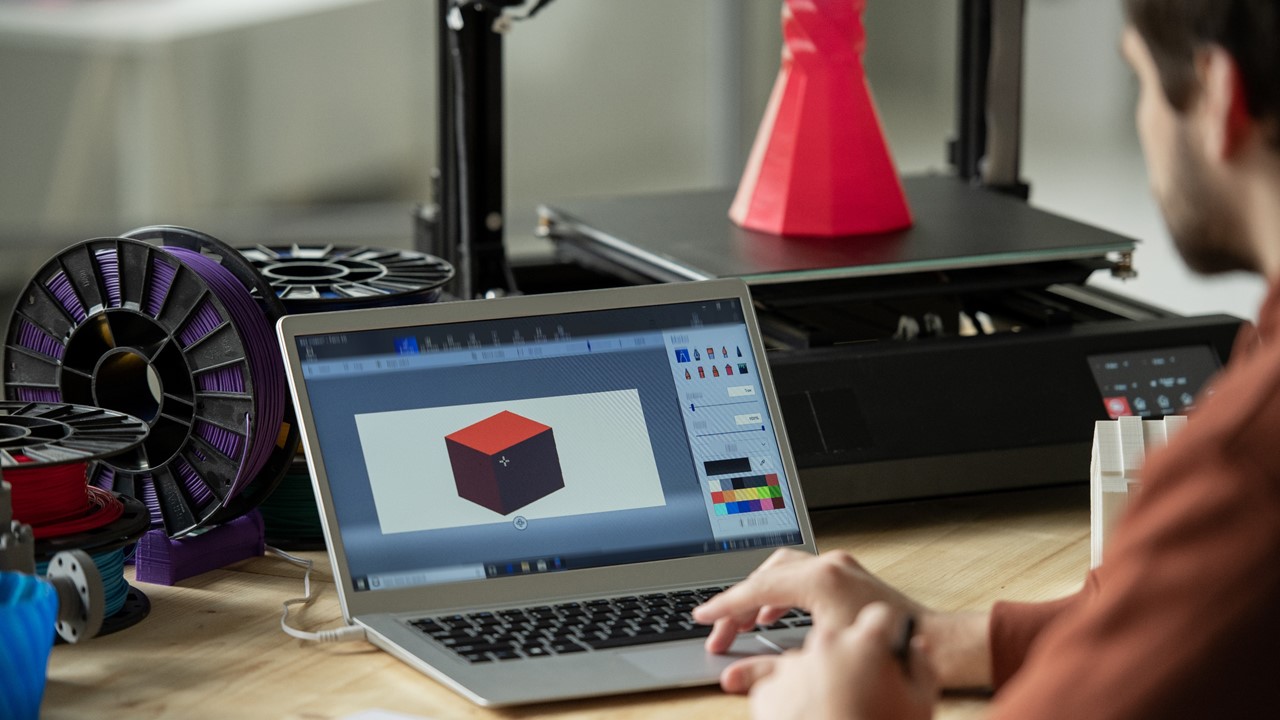Design thinking, a problem-solving approach that emphasizes empathy, ideation, prototyping, and iteration, can be effectively applied in the field of strategy and innovation. Here are some ways in which design thinking can be used in this context:
Customer-Centric Strategy Development: Design thinking starts with understanding the needs and desires of customers. By applying design thinking principles, organizations can gain deep insights into their customers’ experiences, pain points, and aspirations. This customer-centric approach helps in formulating strategies that are focused on delivering value and creating a competitive advantage.
Opportunity Identification: Design thinking encourages organizations to identify and explore new opportunities for innovation. By observing and empathizing with users, as well as analyzing trends and market dynamics, design thinking can uncover unmet needs and identify areas where innovation can thrive. This helps organizations stay ahead of the curve and identify strategic growth areas.

Ideation and Concept Development: Design thinking fosters a culture of ideation and creative problem-solving. It involves brainstorming and generating a wide range of ideas, which can lead to breakthrough concepts and innovations. By applying design thinking methods, organizations can encourage cross-functional collaboration and generate diverse perspectives to drive strategic and innovative thinking.
Rapid Prototyping and Testing: Design thinking emphasizes the importance of prototyping and iterative testing. In the field of strategy and innovation, this approach allows organizations to quickly test new ideas, concepts, and strategies in a low-risk environment. Prototyping can take various forms, such as mock-ups, storyboards, or even digital simulations. By obtaining early feedback and iterating based on user insights, organizations can refine their strategies and innovations before full-scale implementation.
Human-Centered Business Models: Design thinking challenges organizations to rethink their business models from a human-centered perspective. It encourages organizations to understand the ecosystem in which they operate, the stakeholders involved, and the value exchanges between them. By using design thinking, organizations can identify innovative ways to create, deliver, and capture value, leading to sustainable and customer-centric business models.
Designing Customer Experiences: Design thinking can also be applied to enhance customer experiences. By mapping out the customer journey, organizations can identify pain points and opportunities for improvement. Through iterative design and testing, organizations can create compelling and memorable experiences that differentiate them from competitors and foster customer loyalty.
Overall, design thinking brings a fresh perspective to strategy and innovation by placing the customer at the center of the process, promoting creativity, and encouraging iterative experimentation. By applying design thinking principles, organizations can drive strategic growth, foster innovation, and create products, services, and experiences that truly resonate with their customers. Let’s explore a case study that demonstrates the application of design thinking in the development of a new product.
Case Study: Design Thinking in Product Development
Company Background: XYZ Corp is a technology company specializing in smart home automation solutions. They aim to create innovative products that enhance the convenience and comfort of users’ daily lives.
Challenge: XYZ Corp identified the need for a new product that would simplify the control and management of various smart devices within a home. The challenge was to design a user-friendly interface and system that would seamlessly integrate with different devices and provide a unified control experience for users.
Design Thinking Process:
- Empathize: The XYZ Corp team began by conducting user research and interviews with homeowners to understand their pain points and challenges related to managing smart devices. They observed how users interacted with their devices, identified frustrations, and noted areas for improvement.
- Define: Based on the insights gained from empathy, the team defined the problem statement: “How might we create a user-friendly interface that simplifies the control and management of diverse smart devices in a home?”
- Ideate: The team conducted brainstorming sessions, involving cross-functional team members from design, engineering, and marketing, to generate ideas for a solution. They encouraged free thinking, encouraged wild ideas, and focused on creating a unified control experience. Ideas included voice control, intuitive mobile apps, and a central hub.
- Prototype: To bring their ideas to life, the team developed low-fidelity prototypes of different concepts. They created paper prototypes, interactive wireframes, and digital simulations to test various interaction patterns and visual designs. Prototypes were quickly iterated based on user feedback and technical feasibility.
- Test: The team conducted usability tests with potential users, allowing them to interact with the prototypes and provide feedback. They observed how users navigated through the interface, identified pain points, and gathered suggestions for improvement. This iterative testing process helped refine the design and prioritize features.
- Implement: With a refined design, XYZ Corp proceeded with the implementation of the product. They collaborated closely with the engineering team to ensure the feasibility of the design while maintaining the user-centric approach. The team also considered scalability and compatibility with different smart devices.
- Launch and Iterate: The product was launched in the market, and XYZ Corp closely monitored user feedback and behavior. They collected data on user interactions and satisfaction levels to further improve the product. Regular updates and feature additions were released based on user feedback and evolving market trends.
Results: Through the application of design thinking, XYZ Corp successfully developed a user-friendly smart home control system. The product provided a seamless and intuitive interface, allowing users to manage their smart devices effortlessly. User feedback indicated high satisfaction with the ease of use and the enhanced convenience the product offered. The iterative process also enabled XYZ Corp to stay responsive to user needs and continuously improve the product based on real-world usage.
This case study demonstrates how design thinking can drive innovation in product development, ensuring that the end product addresses user needs, delivers an exceptional user experience, and aligns with the organization’s goals and values.






